|
Monday 27th
December 2021 to Sunday 2nd January 2022 |
| |
|
On Tuesday 28th just after sunset, if you
look close to the south west horizon it is possible to see Venus, with
Mercury below it and slightly to the left. Above Venus and further to the
left are the gas giant planets Saturn and Jupiter. |
| |
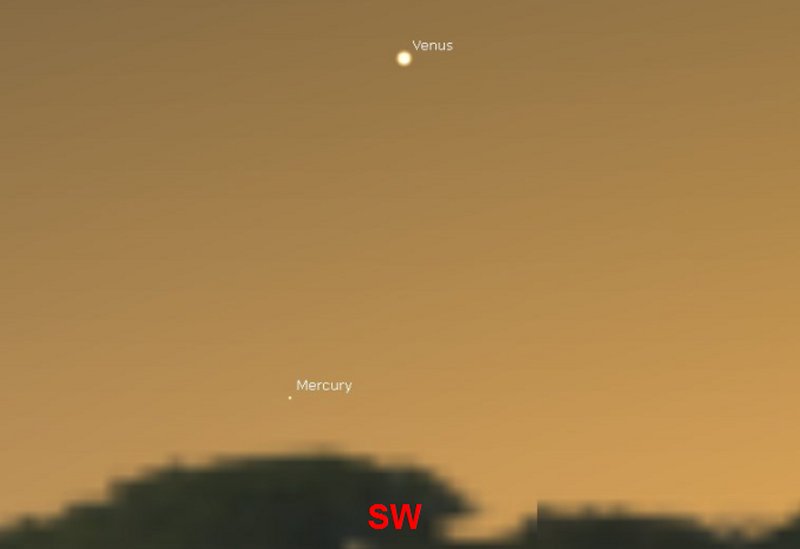 |
| |
|
Four planets in one go isn't bad, but that's
not all.......... |
| |
|
If you have your telescope or binoculars out
to view Venus and Mercury, you could also have a go at spotting Uranus and
Neptune from 6pm which is when true darkness occurs that evening. Uranus at
magnitude +5.7 will be towards the south east, to the right of the Pleiades
cluster of stars, above the constellation of Cetus. Neptune, magnitude
+7.9, is harder to locate. It will be slightly west of due south and the
easiest way to find it will be to draw an imaginary line from Saturn to
Jupiter and then extend the line about the same distance past Jupiter -
Neptune will be sat above the constellation of Aquarius. |
| |
 |
| |
 |
| |
|
I've missed Mars off the list of planets, but
you can even spot that one next week if you are up early, around 7am, on
Friday 31st. It will be close to the horizon towards the south east, with
the red supergiant star Antares to the right of it and also an 8%-lit waning
crescent Moon. |
| |
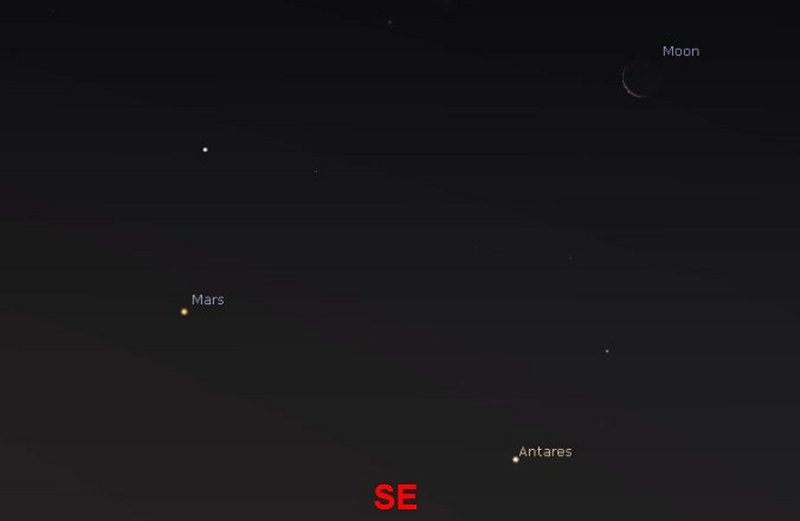 |
| |
|
Well that's covered all the major bodies in
our Solar System - not a bad end to 2021 and let's hope it's a good omen for
better times in the New Year! |
|
Monday 20th
to Sunday 26th December 2021 |
| |
|
On Tuesday 21st at 3.59pm in the afternoon,
the centre of the Sun's disc will reach its lowest position in the sky
relative to the stars - this is called the Winter Solstice in the Northern
Hemisphere, or in simple terms, the shortest day of the year - every evening
after that it will stay progressively lighter a bit longer by almost four
minutes. This is because the Earth actually takes 23 hours 56 minutes and 4
seconds to rotate, but we round it up to 24 hours to make it easier to read
a clock! |
| |
|
The late evening of Wednesday 22nd sees the
peak of the Ursids meteor shower, so named because the radiant point where
the shooting stars appear to originate from is in the constellation of Ursa
Minor, near the star Kochab. Around 11pm, you'll need to be looking towards
the north. |
| |
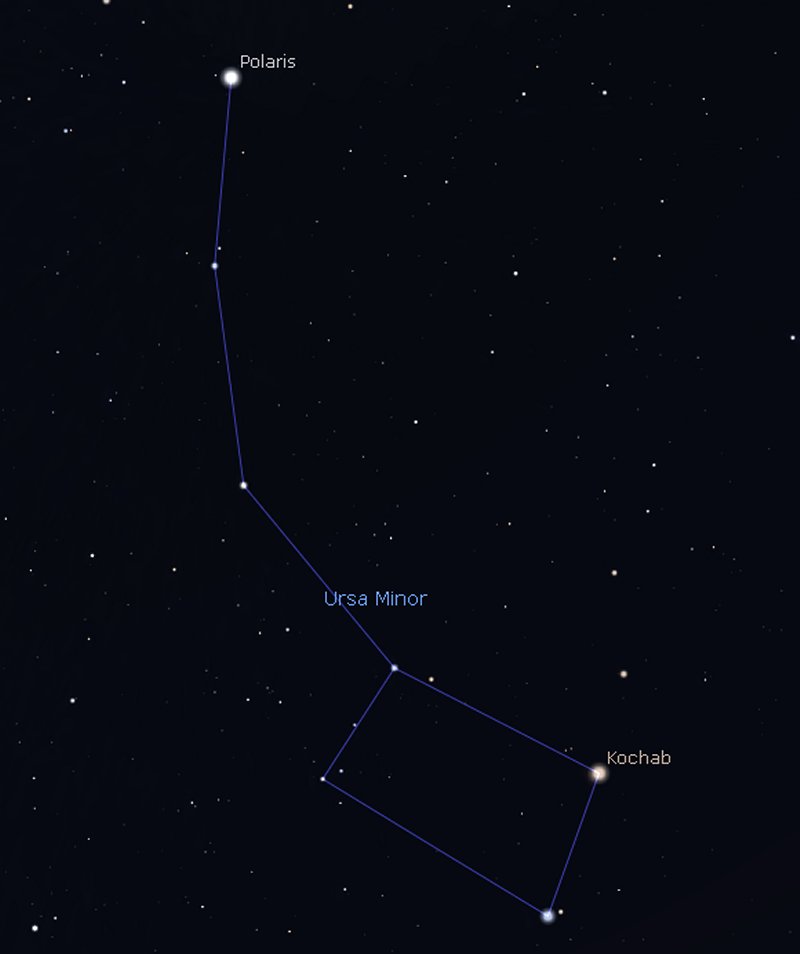 |
| |
|
The meteors are debris from comet 8P/Tuttle
and they are travelling at around 70 kilometers per second when they hit our
atmosphere and vaporise! The Ursids is not one of the largest meteor
showers and only produces typically 10 per hour. |
| |
|
Talking about things that are going really
fast, I have received a tip-off that Father Christmas will be doing a secret
test run of his sleigh with the reindeer on the early morning of Thursday
23rd. Because he is travelling so fast, the sleigh will look like a moving
bright light. It is due to be appearing in the south west at 6.47am and
will take about seven minutes to pass overhead, before disappearing to the
east. If all goes well, then he will be ready to deliver presents on
Christmas Day. |
| |
 |
| |
|
On that note, it just remains for me to wish
everyone a Happy Christmas and clear skies in 2022. |
|
Monday 13th
to Sunday 19th December 2021 |
| |
|
The main astronomical event is the peak of
the Geminid meteor shower with the best opportunity being the early hours of
Tuesday morning 14th. There is a 78%-lit Gibbous Moon creating some light
pollution, but it sets around 3am, giving you a few hours of dark sky before
sunrise. |
| |
|
The Geminids is so named because the radiant
point where the meteors appear to originate from is in the same area of the
sky as the constellation of Gemini, "The Twins". The radiant point is near
the bright star Castor which marks the head of the right hand twin. If you
get up early, around 4 - 5am, Gemini will be located towards the south west. |
| |
 |
| |
|
The debris that is creating the shooting
stars is from an asteroid, which is unusual as most meteor showers are
caused by debris from comets. As a result, the debris contains traces of
metals and this can create different colours as it burns up in the
atmosphere. We use the same principle to make fireworks colourful. |
| |
|
At the beginning of the year, a new comet was
discovered. C/2021 A1 is also called "Leonard" after the astronomer who
first found it. The comet is currently to the lower right of Venus which
sets below the south west horizon shortly after sunset. Telescope users
should be able to see the comet's tail and it is hoped that it may even be
visible to the naked eye. |
| |
|
Below is a diagram
showing the comet's location through the rest of December, courtesy of Sky
at Night Magazine, along with a photograph of the comet taken by astronomer
Jose Chambo. |
| |
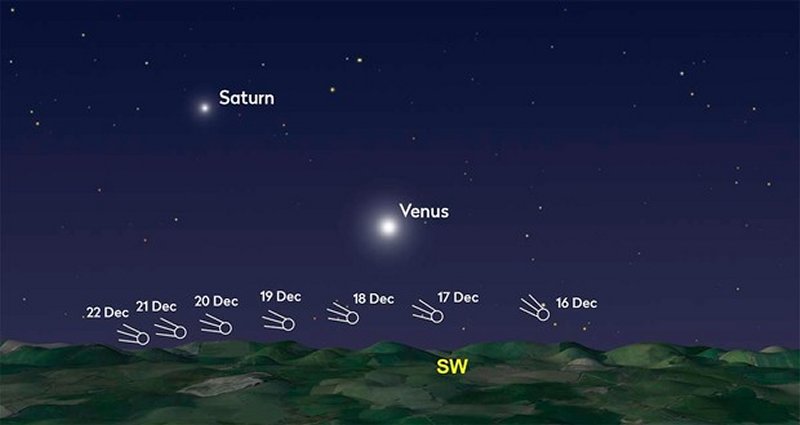 |
| |
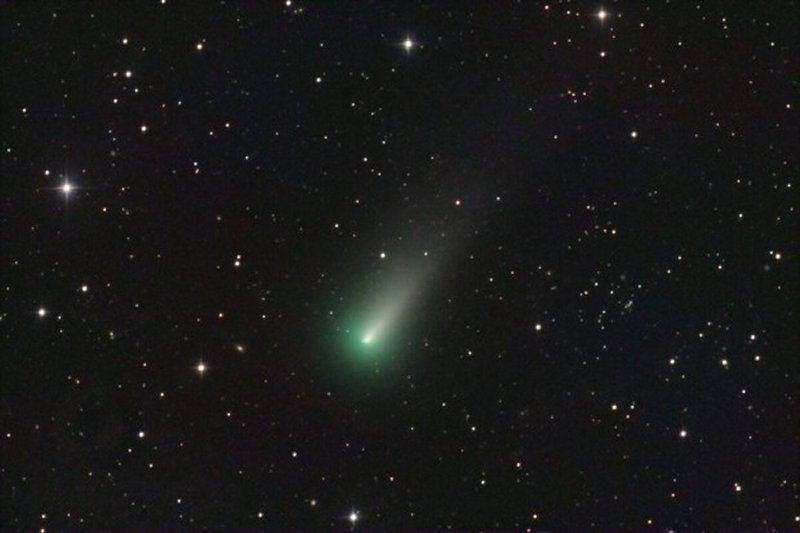 |
|
Monday 6th
to Sunday 12th December 2021 |
| |
|
At the moment, the early evening sky presents
a great view of the planets Venus, Saturn and Jupiter when you look towards
the south. If you do this around 5pm on Tuesday 7th, a 16%-lit Crescent
Moon is also added into the equation. |
| |
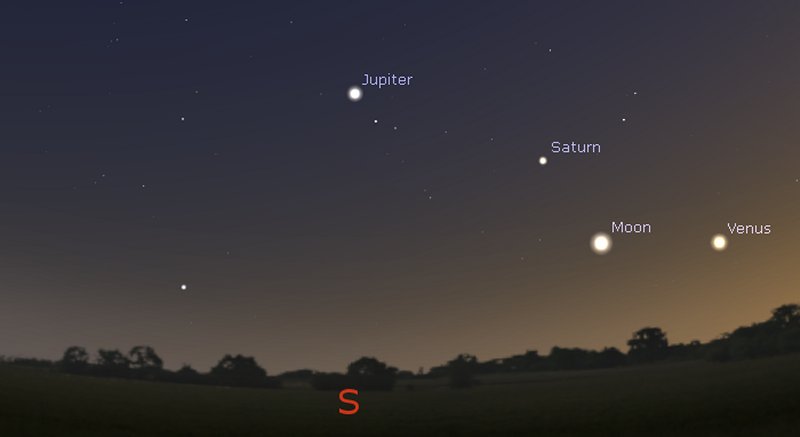 |
| |
|
It's
a brilliant time to get youngsters out in the garden with a telescope as
potentially you can see the Galilean Moons of Jupiter, the rings of Saturn,
Venus as a crescent and the Moon all in one hit without even having to stay
up late and get too cold! |
| |
|
A few weeks ago I mentioned a series of
visual effects on the Lunar surface known as "clair-obscur". Later next
week there is the opportunity to see two of them.......... |
| |
|
Firstly, around 8.30pm on Saturday 11th, it
is possible to observe the effect known as "The Face of Albategnius" which
looks like the profile of a face in the crater with the same name.
|
| |
|
Then, around 10.20pm on Sunday 12th, "The
Eyes of Clavius" can be seen as the Lunar dawn breaks over the crater
Clavius. |
| |
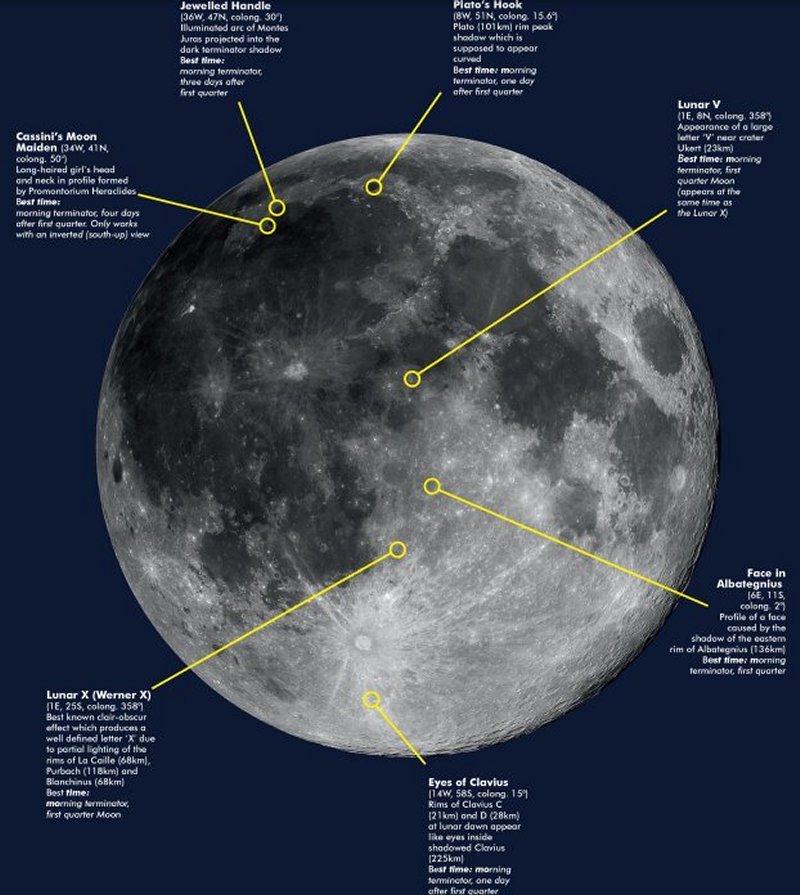 |
| |
|
While you are looking at the Moon, I thought
it might be fun to spot where the Apollo missions landed over fifty years
ago. |
| |
 |
|
Monday 29th
November to Sunday 5th December 2021 |
| |
|
Venus was the Roman goddess of love. It is
also the name of the second planet in our Solar System. Venus is sometimes
described as our "sister planet" because it has a similar size and mass to
the Earth. |
| |
|
Venus is certainly beautiful to observe - it
is the brightest object in the night sky next to our Moon and a telescope
will reveal that it has different phases, just like the Moon. |
| |
|
However, that's where any connection between
Venus and love stops! Venus has a thick toxic atmosphere of Carbon Dioxide
with clouds of Sulphuric acid. The clouds trap heat and the surface
temperature is around 475 degrees Celsius. This results in very high
atmospheric pressure - about 90 times that of the Earth or the equivalent to
being a mile under the ocean! So if you travelled to Venus in your
spaceship, you would be eaten by acid, cooked and crushed to death, but not
necessarily in that order! Lovely!! |
| |
|
Next week you can observe Venus from the
safety of your back garden though as the planet is currently at its
brightest. Look towards the south west just as it's getting dark and the
planet will be setting in a line with Saturn and Jupiter above and to the
left of it. Using a telescope will reveal a wonderful crescent shape, but
if you're doing that, please make sure that your telescope is not pointing
anywhere near the setting Sun - please wait until the Sun has completely
disappeared below the horizon! |
| |
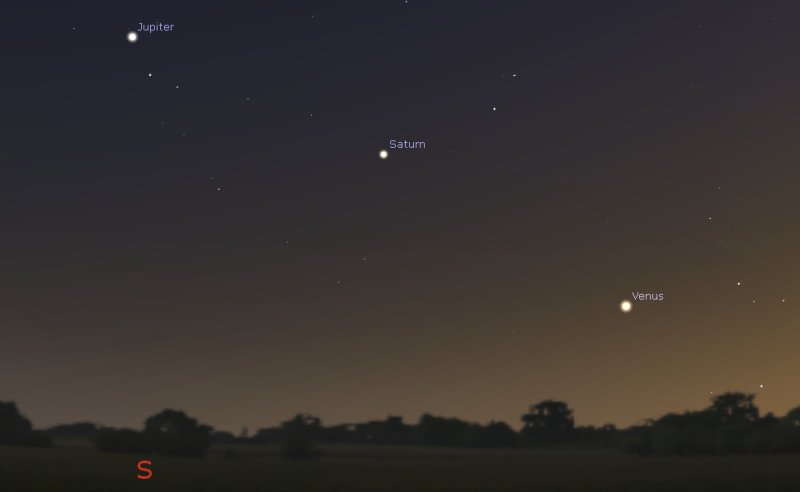 |
| |
 |













